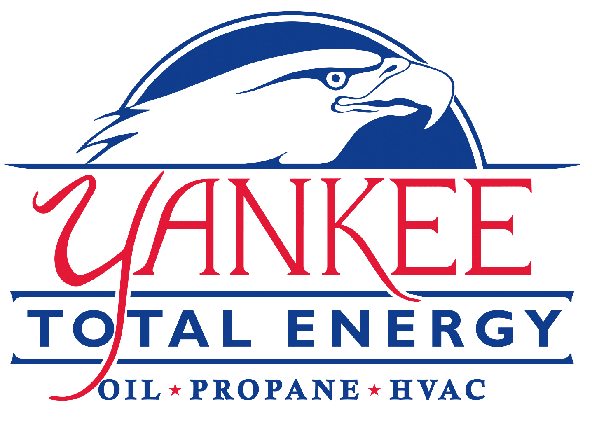When the crisp fall air turns to winter chill, most Connecticut homeowners start thinking about two things: staying warm and keeping heating bills under control. Energy costs can rise quickly during the colder months, especially when everyone is home more often and systems are running around the clock.
The good news? You have more control than you might think. At Yankee Total Energy, we help homeowners across Eastern Connecticut improve comfort while reducing energy use — no matter what type of heating system they have.
In this guide, we’ll share practical energy-saving tips for winter that can make your home cozier and your monthly bills more predictable.

Why Winter Energy Efficiency Matters
Energy efficiency isn’t just about cutting costs (although that’s a major plus). It also:
-
Reduces wear and tear on your heating system, extending its lifespan
- Keeps your home’s temperature more stable
-
Supports a greener, more sustainable home
Even small adjustments can add up to significant savings over an entire heating season.
Get a Professional System Tune-Up
No matter how you heat your home — oil, propane, natural gas, or electric — an annual tune-up keeps your system running at peak efficiency.
-
Helps prevent mid-season breakdowns
During a professional maintenance visit, a technician will:
-
Clean burners, fans, and filters
-
Check safety controls and calibrate performance
-
Inspect heat exchangers, wiring, and connections
-
Spot early warning signs of problems
A tuned system uses less energy and is less likely to break down on the coldest day of the year.
Upgrade to a Smart Thermostat
Your thermostat is one of the most powerful tools you have for saving energy. Smart thermostats learn your schedule and adjust temperatures automatically — so you’re not heating an empty house.
-
Set it and forget it: Program lower temperatures overnight or while you’re away.
-
Control from anywhere: Many models allow remote access via smartphone.
-
Track savings: See reports that show how much energy you’ve saved each month.
Just lowering the thermostat 7–10 degrees for 8 hours a day can save up to 10% annually on heating costs.
Find and Seal Drafts
Drafts are the enemy of efficiency. They let warm air escape and cold air sneak in, making your heating system work harder.
Check for drafts around:
-
Windows and doors
-
Attic hatches
-
Baseboards
-
Electrical outlets on exterior walls
Seal leaks with caulk, weatherstripping, or foam. The result? A warmer, more comfortable home and lower energy bills.
Improve Insulation
Insulation is one of the most cost-effective ways to save energy long-term. Focus on key areas:
-
Attic: Warm air rises, so poor attic insulation is a major source of heat loss.
-
Basement or crawl space: Insulate rim joists and walls to keep floors warmer.
-
Walls: If you have an older home, blown-in insulation can make a huge difference.
A well-insulated home stays warmer longer and reduces the load on your heating system.
Use Ceiling Fans in Reverse
It may sound counterintuitive, but ceiling fans can actually help keep you warmer. Most fans have a reverse switch — set them to run clockwise on low speed to push warm air down from the ceiling.
Keep Vents and Radiators Clear
Blocked vents or radiators make your system work harder. Move furniture, curtains, and rugs away from heat sources so warm air can circulate freely throughout your home.
Add Window Treatments
Thermal curtains or insulated shades add an extra layer of protection on cold nights. During the day, open curtains on sunny windows to let in natural heat, then close them at night to keep warmth in.
Balance Humidity Levels
Dry winter air can make you feel colder even at the same temperature setting. Keeping indoor humidity around 30–40% helps you feel warmer, protects woodwork and furniture, and may allow you to lower the thermostat a degree or two.
Adjust Your Daily Habits
Sometimes, energy savings come from simple behavior changes:
-
Lower the thermostat by a degree or two and wear a sweater
-
Close doors to unused rooms
-
Cook meals in the oven to add extra warmth
-
Use rugs on bare floors to hold heat in
Small adjustments throughout the day can add up to significant energy savings.
Monitor Your Energy Use
Many utility companies offer online tools or smart meters to track your energy use in real time. Monitoring helps you spot patterns and make informed adjustments to your routine.
Consider Equipment Upgrades
If your heating system is more than 15 years old, it may be running at just 60–70% efficiency. Replacing it with a modern high-efficiency unit can:
-
Lower energy use by up to 30%
-
Provide more even heat
-
Qualify you for rebates and incentives
-
Reduce maintenance and emergency repair calls
At Yankee Total Energy, we can evaluate your current system and recommend upgrades that fit your home and budget.
Enroll in a Budget or Price Protection Plan
Energy savings aren’t only about using less — they’re also about managing costs wisely. Our budget plans and price protection programs help you spread fuel costs evenly throughout the year and avoid winter price spikes.
Work With a Trusted Local Provider
A reliable energy partner can help you make the most of your home comfort system. Yankee Total Energy offers:
-
Heating fuel delivery (oil, propane)
-
System tune-ups and repairs
-
Equipment installation and replacement
-
24/7 emergency service
-
Expert advice to improve efficiency
Keeping your home warm and energy-efficient this winter doesn’t require a complete overhaul — just a few smart steps. Schedule a tune-up, seal drafts, upgrade your thermostat, and consider long-term improvements like insulation or equipment upgrades.
By taking action now, you’ll enjoy a cozier home, lower monthly bills, and peace of mind all season long.
Ready to prepare your home for winter? Contact Yankee Total Energy today to schedule maintenance, discuss budget plans, or learn about equipment upgrades that can save you money for years to come.






